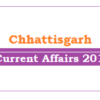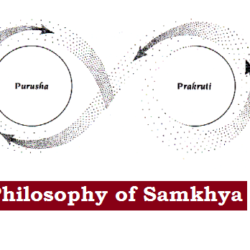
Soon after the United Nations Conference on the Human Environment held in Stockholm in 1972, the Water (Prevention and Control of Pollution) Act, 1974 was enacted. The Constitution of India was amended in 1976 to include Article 48-A (Protection and improvement of environment and safeguarding of forests and wildlife) and Article 51-A (g) (to protect and improve the natural environment).
The Department of Environment was established in India in 1980 to ensure a healthy environment for the country. The Forest (Conservation) Act was promulgated in 1980 to make certain reforms over the preceding Forest Act of 1927.Then came the Air (Prevention and Control of Pollution) Act 1981 and finally the “umbrella” for legislation the Environment (Protection) Act, 1986 was enacted.
Background
- In the wake of the Bhopal tragedy, the government of India enacted the Environment (Protection) Act of 1986.
- The purpose of the Act is to implement the decisions of the United Nations Conference on the Human Environment of 1972 at Stockholm, Sweden, in so far as they relate to the protection and improvement of the human environment and the prevention of hazards to human beings, other living creatures, plants and property.
- The Act is an “umbrella” for legislations designed to provide a framework for Central Government, coordination of the activities of various central and state authorities established under previous Acts, such as the Water Act and the Air Act.
- In this Act, main emphasis is given to “Environment”, defined to include water, air and land and the inter-relationships which exist among water, air and land and human beings and other living creatures, plants, micro-organisms and property.
- “Environmental pollution” is the presence of pollutant, defined as any solid, liquid or gaseous substance present in such a concentration as may be or may tend to be injurious to the environment.
- “Hazardous substances” include any substance or preparation, which may cause harm to human beings, other living creatures, plants, microorganisms, property or the environment.
Provisions of the Act
Prevention and Control:
- The Act empowers the center to “take all such measures as it deems necessary”. By virtue of this Act, Central Government has armed itself with considerable powers which include,
- Coordination of action by state
- Planning and execution of nationwide programmes
- Laying down environmental quality standards, especially those governing emission or discharge of environmental pollutants
- Placing restriction on the location of industries and so on
- Authority to issue direct orders, included orders to close, prohibits or regulates any industry
- Power of entry for examination, testing of equipment and other purposes and power to analyze the sample of air, water, soil or any other substance from any place
- The Act debars a civil court from having any jurisdiction to entertain any suit or proceeding in respect of any action, order, or direction issued by the Central Government or any other statutory authority under this Act.
Prohibition:
- It prescribes the procedure for handling hazardous substances, and the concerned person has to handle such substances in accordance with the procedure established by the Act.
- The Act explicitly prohibits discharges of environmental pollutants in excess of prescribed regulatory standards.
- There is also a specific prohibition against handling hazardous substances except those in compliance with regulatory procedures and standards.
Penalties:
- The Act provides provision for penalties. For each failure or contravention the punishment included a prison term up to five years or fine up to Rs. 1 lakh, or both.
- The Act imposed an additional fine of up to Rs. 5,000 for every day of continuing violation.
- If a failure or contravention occurs for more than one year, offender may be punished with imprisonment which may be extended to seven years.
- Section 19 provides that any person, in addition to authorized government officials, may file a complaint with a court alleging an offence under the Act as “Citizens’ Suit”.

 Home
Home Syllabus
Syllabus Contact Us
Contact Us








